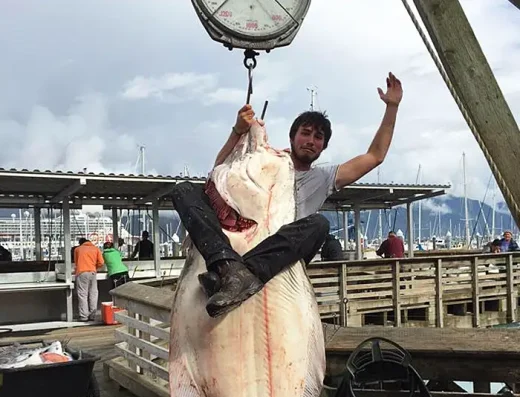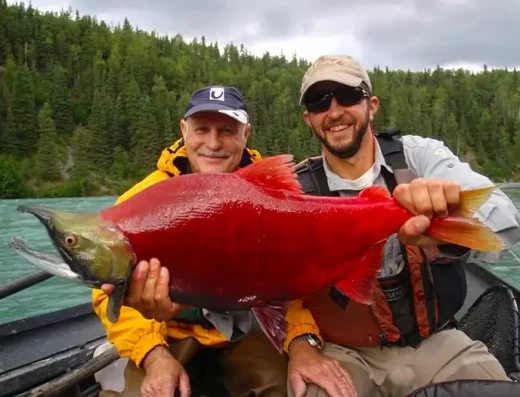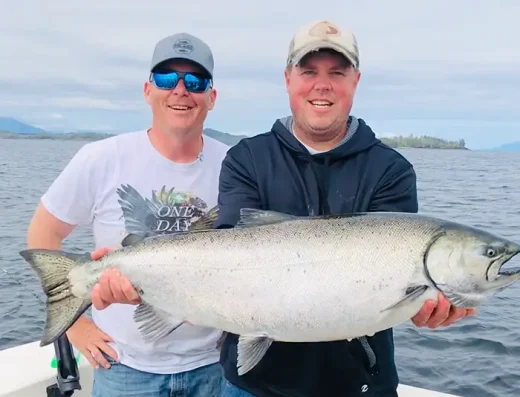Alaska Fishing Charters
Alaska fishing charters range from halibut and king salmon runs off the Kenai Peninsula to remote fly-outs for arctic grayling and big pike deep in the Interior.
TrustedFish connects anglers with proven local captains in Alaska —no commissions, no pay-to-play listings, no BS. Every charter on our platform is invite-only, vetted for skill, local knowledge, and reputation. If they’re listed, they’ve earned it.
Top Rated Charters in Alaska
Alaska Fishing Guide
Alaska’s fishing isn’t just big—it’s damn near endless. You’ve got saltwater out of Seward, Homer, and Valdez where boats run short hops to deep reefs for halibut, lingcod, and rockfish, with bonus salmon mixed in seasonally. Then there’s the Kenai and Kasilof rivers pumping out chrome-bright kings, sockeye, and silvers. You can hit it all from a lodge, a day boat, or a bush plane, depending how deep you want to go.
Most saltwater charters are full-day, launching from harbors with quick access to Resurrection Bay, Prince William Sound, or Cook Inlet. Runs vary—20 minutes to an hour depending on tides and the bite. Gear is stout—cut herring or jigs for halibut, pipe jigs and swimbaits for lings, trolling flashers and hoochies for salmon.
Inland, things spread wide. Bristol Bay’s rivers—like the Naknek, Nushagak, and Kvichak—see guided jet sleds and fly-outs targeting king salmon, rainbows, and every Pacific salmon species depending on the month. Floatplane lodges are common. Anglers hike into headwaters or float remote systems for dollies, char, and grayling. Interior hotspots like the Tanana or Yukon tribs offer big pike and sheefish if you’re looking for something different.
Bait bans are common on freshwater systems, so expect to swing flies, drift beads, or cast hardware depending on regs. Whether you’re fishing sockeye on the Russian River elbow-to-elbow or flying out to a glacial lake only bears have seen, Alaska’s got a trip for it.
Regional Fishing Highlights
Kenai Peninsula
The Kenai and Kasilof rivers are home to famous salmon runs—kings in June, reds in July, and silvers into fall. Most charters are drift or powerboat trips with experienced guides. Nearby, Homer and Seward offer quick ocean access for halibut, rockfish, and feeder kings. Great mix of freshwater and saltwater options with good infrastructure and reliable logistics.
Bristol Bay & Western Rivers
This is fly-out country. Remote rivers like the Alagnak, Nushagak, and Kvichak produce some of the best wild salmon and trout fishing left on the planet. You’ll target rainbows on mice and beads, big kings on swung flies, and silvers with streamers or spinners. Lodges typically handle everything—flights, meals, guides, and logistics.
Prince William Sound
Launching from Valdez or Whittier, you’ve got sheltered saltwater options that still offer halibut, lingcod, and salmon. Waters here stay calmer than Cook Inlet. Orcas, glaciers, and a mixed-bag fishery make it a good spot for families or folks wanting great scenery with solid fishing.
Interior Rivers & Lakes
The Yukon and Tanana systems produce northern pike, sheefish, burbot, and grayling. Boats are usually smaller, and the fishing slower-paced but rewarding. Fly fishing and light tackle work best. Access is limited—most anglers go with a lodge or local guide who knows the water and roads.
Fishing Seasons in Alaska
Spring
May is when saltwater charters start chasing halibut and early feeder kings out of Homer and Seward. Interior rivers break up by mid-May, opening up early pike and grayling action. Kenai isn’t quite rolling yet, but things start stirring toward the end of the month.
Summer
June through August is peak time. King salmon flood the Kenai, Nushagak, and other major systems in early summer. Reds and chums stack in July, and silvers take over by August. Offshore, halibut and lingcod are solid all summer, with mixed salmon depending on the tide and run timing.
Fall
Silver salmon are the name of the game through September. Interior rainbows feed hard ahead of freeze-up. Bears thin out and crowds drop, especially in the bush. This is prime time for trophy trout in Bristol Bay and fewer people on the water.
Winter
Most of the state ices over, but you’ll still find lake trout, pike, and burbot under the ice in the Interior. Saltwater boats don’t run often, but locals in places like Homer will still sneak out for winter kings when the weather opens up. Fly-outs shut down until breakup.
Most Popular Gamefish in Alaska
- Halibut – 15–100+ lbs. Offshore reefs and ledges from Seward, Homer, and Valdez. Cut herring, jigs, circle hooks.
- King Salmon – 10–50 lbs. Kenai, Kasilof, Nushagak, and feeder kings offshore. Backtrolling plugs, drifting eggs, or trolling flashers.
- Silver Salmon – 6–15 lbs. Late summer river runs and nearshore saltwater. Spinners, twitching jigs, or streamers.
- Sockeye Salmon – 4–10 lbs. July runs in Kenai, Russian, and Bristol Bay. Flossing with beads or flies.
- Rainbow Trout – 16–30 inches. Bristol Bay rivers and tailouts. Beads, mice patterns, swung streamers.
- Lingcod – 10–40 lbs. Offshore rockpiles and ledges. Pipe jigs, swimbaits, stout gear.King Mackerel – 10 to 30 lbs. Trolled nearshore to mid-range on spoons or live bait rigs, especially summer through fall.
- Northern Pike – 5–25 lbs. Interior lakes and rivers. Weed beds, topwater, spoons, and big flies.
- Arctic Grayling – 10–20 inches. Interior streams and clear creeks. Dry flies, small spinners, and nymphs.
- Sheefish – 10–40 lbs. Yukon drainage and back eddies. Jigs, spoons, or fly gear.
Alaska Fishing FAQs
Do I need a fishing license in Alaska?
Yes—residents and non-residents both need a license. If you’re targeting king salmon, you’ll also need a king stamp.
When’s the best time for salmon fishing in Alaska?
Usually yes, within legal limits. Most charters include fish cleaning, and there are processors near most ports who’ll vacuum seal and ship.
What gear should I bring for a river trip?
Layered clothing, rain gear, polarized glasses, and if you’re fishing solo—bear spray. Most guides provide tackle.
How rough is the ocean in Alaska for deep sea trips?
Cook Inlet and the Gulf can get sloppy. Prince William Sound and Resurrection Bay are more sheltered. Full-day trips can involve choppy water—bring Dramamine if you’re unsure.
Can kids come on Alaska fishing charters?
Yes, especially on half-day saltwater or Kenai River drift trips. Some guides specialize in family-friendly outings.
What’s the deal with fly-out fishing trips?
Fly-outs use floatplanes to reach remote rivers and lakes. Some are single-day trips, others lodge-based with daily flights out. Weather can delay travel, so flexibility is key.
Are there bears near the rivers?
Absolutely. Most areas have browns or blacks nearby. Guides carry protection and know how to avoid problems.
What’s the difference between Homer and Seward for halibut?
Both are solid. Seward has quicker runs and more mixed-species days. Homer offers big halibut and more trip options.
Can I keep the fish I catch on a charter?
Usually yes, within legal limits. Most charters include fish cleaning, and there are processors near most ports who’ll vacuum seal and ship.









